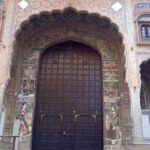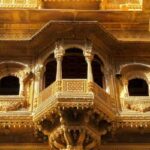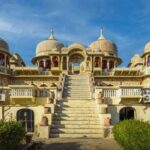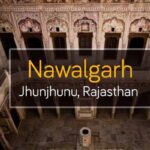Morarka Haveli Museum, located in Nawalgarh, Rajasthan, is an exquisite example of Shekhawati’s rich cultural heritage. Built in the 19th century, this haveli (mansion) showcases intricate frescoes and murals that depict mythological tales, everyday life, and folklore of Rajasthan. The frescoes are known for their vibrant colors and detailed artistry, making the haveli a significant landmark for art enthusiasts and historians alike.
The haveli has been meticulously restored and converted into a museum, offering visitors a glimpse into the grandeur of Rajasthan’s architectural and artistic traditions. The walls and ceilings of Morarka Haveli are adorned with paintings that reflect the influences of Mughal and Rajput art styles. The museum also provides insights into the lifestyle of the Marwari merchant families who once resided here.
Visiting Morarka Haveli Museum is a journey through time, offering a unique perspective on Rajasthan’s artistic past, making it a must-see for anyone exploring the Shekhawati region.
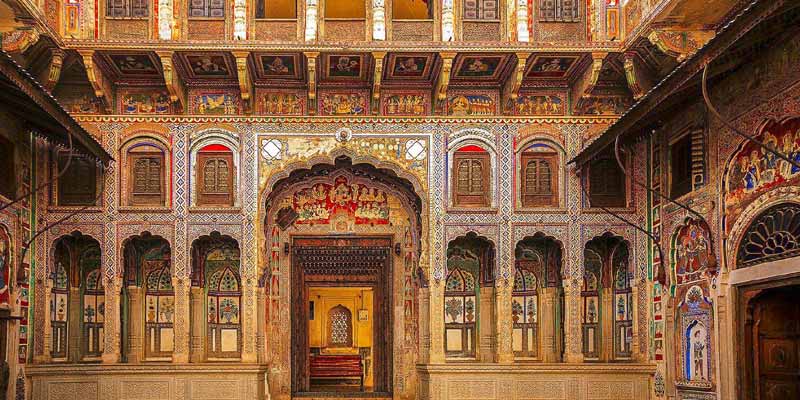
History of Morarka Haveli Museum
The Morarka Haveli Museum in Nawalgarh, Rajasthan, is a splendid example of traditional Rajasthani architecture, specifically reflecting the grandeur of Shekhawati havelis. Built in the 19th century, this haveli was commissioned by the wealthy Morarka family, who were prominent merchants in the region. Nawalgarh, located in the Shekhawati region, is known for its beautifully frescoed havelis, and Morarka Haveli stands out as a significant landmark.
Key Historical Aspects:
Shekhawati Merchant Culture: The haveli was part of a broader tradition of affluent merchant families constructing grand homes, adorned with intricate paintings and lavish decorations. These merchants, including the Morarka family, gained wealth from trade, particularly in textiles and opium, and displayed their prosperity through such architectural marvels.
Frescos and Art: Morarka Haveli is renowned for its extensive fresco work, which is typical of the Shekhawati region. The walls and ceilings of the haveli are covered with intricate paintings, often depicting scenes from Hindu mythology, daily life, and even European influences, reflecting the global trade connections of the merchants.
Architecture: The haveli features typical Shekhawati architectural elements such as courtyards, jharokhas (overhanging enclosed balconies), ornate wooden doors, and stunning mirror work. The combination of Rajput and Mughal styles is evident in the design.
Conversion into a Museum: In more recent years, the Morarka Haveli was transformed into a museum, showcasing the rich cultural and artistic heritage of the Shekhawati region. Visitors can explore the beautifully preserved frescoes and gain insights into the opulent lifestyle of the merchant families of the time.
Today, the Morarka Haveli Museum offers a glimpse into the rich history, art, and culture of Rajasthan’s merchant class from the 18th and 19th centuries, making it a key attraction in Nawalgarh.
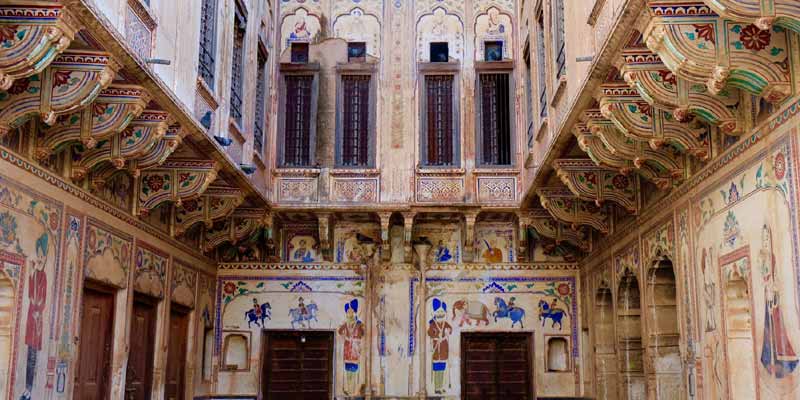
Places to Visit Near Morarka Haveli Museum
Nawalgarh, located in the Shekhawati region of Rajasthan, is famous for its richly painted havelis. If you’re visiting the Morarka Haveli Museum in Nawalgarh, here are a few other nearby attractions worth exploring:
Podar Haveli Museum : This haveli is another example of Shekhawati’s intricate frescoes and architecture. The museum inside displays artifacts, old photographs, and beautifully preserved rooms depicting Rajasthani culture and history.
Aath Haveli Complex : A cluster of eight magnificent havelis, this complex is known for its impressive architecture and detailed paintings, showcasing the grandeur of Shekhawati.
Dundlod Fort : Located about 20 km from Nawalgarh, Dundlod Fort is a striking blend of Rajput and Mughal architecture. The nearby stables are home to the famous Marwari horses, and the town is rich in historical significance.
Roop Niwas Kothi : Once the home of the Thakur of Nawalgarh, Roop Niwas Kothi is now a heritage hotel. It’s worth visiting for its colonial-style architecture and peaceful gardens.
Bala Qila (Nawalgarh Fort) : Built by Thakur Nawal Singh, this fort is now a part of the local college, but it still retains some of its old charm, especially the grand entrance and courtyard.
Mandawa (Nearby Town) : Mandawa, just about 30 km away, is another small town famous for its beautifully painted havelis and the Mandawa Fort. It’s often referred to as an open-air art gallery.
Jhunjhunu : Jhunjhunu is about 30 km from Nawalgarh and is home to the grand Rani Sati Temple, Khetri Mahal (known as Wind Palace), and several other historic havelis.
These places offer a deep dive into the artistic and cultural heritage of the Shekhawati region, making your trip to Nawalgarh even more enriching.
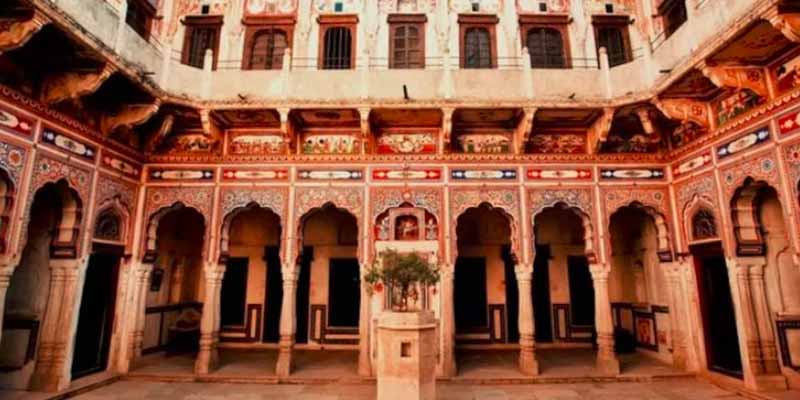
How to Reach Morarka Haveli Museum
To reach Morarka Haveli Museum in Nawalgarh, located in the Shekhawati region of Rajasthan, here are your travel options:
By Air: The nearest airport is Jaipur International Airport, approximately 140 km away. From Jaipur, you can hire a taxi or take a bus to Nawalgarh.
By Train: Nawalgarh has a small railway station with connections to Jaipur, Delhi, and other nearby cities. Sikar Junction, about 30 km away, offers more frequent services. From either station, taxis and auto-rickshaws are available for local transport.
By Road: Nawalgarh is well-connected by road. It’s a 3-hour drive from Jaipur and about 6-7 hours from Delhi via NH 48 and NH 11. Regular buses also operate from Jaipur, Delhi, and nearby towns like Sikar and Jhunjhunu.
Once in Nawalgarh, the haveli is easily accessible by local transport.


